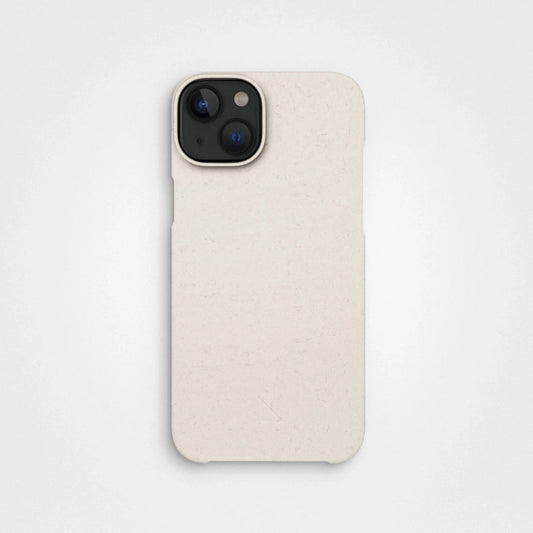Wir werden versuchen, Ihnen in weniger als fünf Minuten alles zu erzählen, was Sie über etwas wissen müssen, das es schon seit fast zwei Jahrtausenden gibt – die Geschichte des Briefpapiers. Es wäre eine Untertreibung zu sagen, dass diese Geschichtsstunde etwas gekürzt wird.
Beginnend mit Papier
Niemand kennt den genauen Geburtstag der Zeitung. Es gab keine Geburtsanzeige oder Pressemitteilung. Um das Jahr 121, als ein Mann namens Cai Lun (traditionelles Chinesisch: 蔡倫) das Papier erfunden haben soll, gab es PR-Kampagnen noch nicht.
Wir wissen, dass Papier in China geboren wurde und eines der größten Geschenke ist, die der Menschheit gemacht werden. Zum ersten Mal in der Geschichte konnte Wissen effizient gespeichert und transportiert werden. Die weltweite Verbreitung von Papier kann als Multiplikator des Fortschritts angesehen werden. Die Kombination aus Schreiben, Landwirtschaft und Papier war der Anstoß für den 2.000-jährigen Fortschritt, der dazu geführt hat, dass Sie dies heute lesen.


Papier hat alles verändert
Protopapier gab es in verschiedenen Formen schon seit mindestens 200 Jahren, bevor Cai Lun das Rezept perfektionierte. Möglicherweise wurde diese Geschichte erneut in Verbindung gebracht, und vielleicht hat er sich die Ehre erst im Nachhinein zu eigen gemacht, aber Aufzeichnungen deuten darauf hin, dass zu dieser Zeit ein Mann mit diesem Namen existierte und dass er ein Erfinder und Politiker war, der am Hofe desöstlichen Han-Kaisers He diente (漢和帝) und dann von Kaiserin Deng Sui (鄧綏). In jedem Fall soll er dafür verantwortlich sein, der Zellstoffzusammensetzung wesentliche neue Materialien hinzuzufügen und die Art und Weise der Papierherstellung zu standardisieren.
Warum war Papier so eine große Sache?
In der Antike (zumindest in China) wurden Aufzeichnungen entweder auf Bambus – was schwer war – oder auf Seide – was teuer war – aufbewahrt. Cai Luns Aufsatz hat das geändert. Eine moderne Analogie wäre das iPhone. Mobiltelefone, PDAs und Musikplayer existierten und funktionierten alle, aber das iPhone vereinte sie alle in einem kompakten Paket, das die steigenden mobilen Datengeschwindigkeiten nutzte. Wie Smartphones heute, wurde es einige Jahre nach der Einführung von Cai Luns Artikel zum unentbehrlichen Gerät für die Speicherung schriftlicher Informationen.
Schließlich wurde um das Jahr 600 der Holzschnitt erfunden und 150 Jahre später erschien die erste gedruckte Zeitung in China. Die erste Zeitung Europas erschien 900 Jahre später , aber wir sollten nicht zu schnell vorgehen.
Papieraufstriche
Wir können den Weg des Papiers aus China auf zwei Arten verfolgen. Auf dem Weg nach Osten gelangte das Papier zunächst nach Korea – wo die Produktion etwa im 3. bis 6. Jahrhundert begann – und von Korea aus gelangte es nach Japan. In der Zwischenzeit expandierten die Han-Dynastien und spätere Dynastien nach Westen, und Papier kam mit. An verschiedenen Orten in der Region gefundene antike Papiere werden auf das 2. Jahrhundert datiert. Nach etwa 600 Jahren erreichte es schließlich Tibet und Indien.

Die Papierherstellung war in der Antike eine wichtige Technologie. Damals war es ein ebenso gehütetes Rezept wie heute die Geheimformel von Coca-Cola. Spoiler-Alarm: Es hat sich herumgesprochen. Wie? Wir werden es vielleicht nie erfahren. Der Legende nach waren chinesische Gefangene, die nach der Schlacht von Talas gefangen genommen wurden, für die Ausbreitung der Technologie im Nahen Osten verantwortlich. Historiker streiten über die Richtigkeit der Behauptung, aber zu dieser Zeit tauchte die Papierherstellung erstmals in Bagdad auf und verbreitete sich in der gesamten Region. Als die Araber im Nahen Osten den Wert dieser Technologie erkannten, versuchten sie, sie geheim zu halten. Dies dauerte bis zum 12. Jahrhundert, als europäische Kreuzfahrer in die Region einfielen und sich die Technologie wiederum aneigneten.
Europa und die Erfindung des „Briefpapiers“
Das Papier kam zuerst in Spanien an und verbreitete sich unaufhaltsam nach Norden. Rund 1.400 Jahre nach der Erfindung des Papiers in China entstand in Europa der Begriff „Briefpapier“. Es war ein spezieller Begriff, der zwischen dem 13. und 15. Jahrhundert verwendet wurde und vom mittelalterlichen lateinischen Wort stationarius stammt – was unbewegt oder dauerhaft bedeutet. Ursprünglich beschrieb es eine Art Händler, der als Vermittler zwischen Universitäten und Buchverlegern/Buchbindern fungierte.
Der Begriff wurde verwendet, weil diese „Schreibwarenhändler“ ihre Geschäfte an einem einzigen Standort hatten, meist in der Nähe einer Universität, der mehr oder weniger dauerhaft, also stationär, war. Der Campus-Copyshop seiner Zeit. Im Laufe der Jahrhunderte wuchsen und entwickelten sich Papier und Papierherstellung in Europa. Regierungen und von Regierungen gegründete Organisationen begannen, Standards für Papier festzulegen.
Die Gutenberg-Druckmaschine aus dem 15. Jahrhundert bewirkte einen monumentalen Wandel in der Geschichte des Briefpapiers. Mit der Massenproduktion von Büchern wurden Schreibmaterialien für die breite Öffentlichkeit zugänglicher, was tiefgreifende Auswirkungen auf die Bildung und die Verbreitung von Ideen hatte.
Im 18. Jahrhundert begann man mit der Massenproduktion handelsüblicher Schreibwaren – wie Briefpapier und Briefpapier – zusammen mit Umschlägen, Kugelschreibern, Bleistiften und allen Standardartikeln, die man in einem typischen Schreibwarengeschäft erwarten würde.

Im 19. Jahrhundert kam der Füllfederhalter auf den Markt, ein revolutionäres Schreibgerät, das Tintenbehälter und Federn nutzte, um ein sanfteres und zuverlässigeres Schreiberlebnis zu ermöglichen. Der Füllfederhalter wurde zum Symbol für Eleganz und Raffinesse und ließ seine Vorgänger wie Federkiele und Tauchstifte hinter sich. Zu Beginn des 20. Jahrhunderts revolutionierte die Erfindung des Kugelschreibers die Schreibindustrie weiter. Seine einfache Handhabung und die Fähigkeit, auf verschiedenen Oberflächen zu schreiben, machten es zu einem kommerziellen Erfolg. Mit fortschreitender Technologie erlebten wir den Aufstieg von Tintenrollern, Gelschreibern und verschiedenen anderen Innovationen. Und das ist, kurz gesagt, die Geschichte des Briefpapiers.
Der Ruf nach nachhaltiger Schreibwaren
Da Verbraucher immer umweltbewusster werden, steigen viele Privatpersonen und Unternehmen auf umweltfreundliche Schreibwaren um. Neue Materialien und Verfahren machen Schreibwaren besser für den Planeten.
Eine Innovation in Sachen Papier
Papier hat in den rund 2.000 Jahren seit seiner Erfindung einen langen Weg zurückgelegt. Traditionell wird es immer aus Holzzellstoff hergestellt. Allerdings ist diese Methode ziemlich schmutzig, und es wäre besser, wenn Bäume im Boden belassen würden, wo sie problemlos CO2 binden, Sauerstoff abpumpen und Ökosysteme unterstützen können.
Betreten Sie das neue Kind im Block: Steinpapier . Eine nachhaltigere Papiersorte, hergestellt aus, Sie ahnen es schon, Stein. Steinpapier erfordert während seines Herstellungsprozesses einen minimalen Wasserverbrauch, was zur Schonung wertvoller Ressourcen beiträgt. Außerdem ist Steinpapier fotoabbaubar, d. h., es zersetzt sich auf natürliche Weise, wenn es Sonnenlicht ausgesetzt wird, was seine Auswirkungen auf die Umwelt weiter verringert. Wenn Sie mehr über Steinpapier erfahren möchten, schauen Sie sich unseren Blog Steinpapier vs. traditionelles Zellstoffpapier an.
Umweltfreundliche Notizbücher und Stifte
Notizbücher aus Steinpapier sind reißfest und bieten eine glatte Schreiboberfläche. Da sie keine Holzfasern enthalten, sind sie auch resistent gegen Schädlinge wie Termiten und tragen nicht zur Abholzung der Wälder bei.


Eine weitere umweltfreundliche Alternative sind Kugelschreiber aus schnell wachsenden Gräsern, für deren Herstellung weniger Ressourcen benötigt werden als für herkömmliche Kugelschreiber aus Kunststoff oder Metall. Diese Stifte sind biologisch abbaubar und reduzieren so den Plastikmüll. Außerdem gibt es den Humanium-Metallstift , der aus recyceltem Metall beschlagnahmter illegaler Schusswaffen hergestellt wird. Die Verwendung dieses Metalls verringert den Bedarf an neuen Ressourcen und verleiht zerstörerischen Materialien einen positiven Zweck.
Die Geschichte des Briefpapiers ist eine Geschichte von Einfallsreichtum, Kreativität und dem menschlichen Wunsch, zu kommunizieren und bleibende Spuren zu hinterlassen. Von den bescheidenen Anfängen bis zum digitalen Stift der Gegenwart hat die Schreibwarenbranche einen langen Weg zurückgelegt. Auf unserem Weg in die Zukunft ist eines sicher: Die Kunst des Briefpapiers wird sich weiter verändern und dabei den zeitlosen Charme bewahren, der es so besonders macht.





























